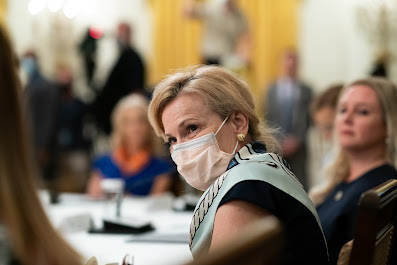Two infectious-disease specialists, Wendy Armstrong, professor of medicine in the Division of Infectious Diseases at Emory University's School of Medicine, and Tina Tan, professor of pediatrics in the Division of Infectious Diseases at Northwestern University's Feinberg School of Medicine, attended a town hall meeting with John B. King Jr., a former U.S. education secretary. They discussed how safely schools can reopen this fall.
If we want to pay attention to the widespread equity issue we live these days, the students from low-income families and those challenged with disabilities, especially those coming from communities of color, are at higher risk. With assertiveness, the Washington Post has published that "hospitalization rates for native and black Americans are five times that of whites; for Hispanic/Latinx communities, the rate is four times that of whites,...meanwhile, amidst the pandemic, immunization rates have declined and a situation in which the virus and influenza flared up at the same time could be disastrous."
 |
| Deborah Birx listens to participants at the National Dialogue on Safely Reopening America’s Schools (Photo by Andrea Hanks) |
There had been widespread discussion about whether or not schools should reopen with face-to-face learning this academic year. President of the Centers for Disease Control and Prevention (CDC) has said that 'hot spot' existed in 33 states over the past week. Due to these concerns, the CDC has released the guidance emphasizing the importance of the in-person school environment. The health organization also has released a decision-making tool to be used by parents, so they decide about the pros and cons of in-person vs. at-home learning.
What Schools Should Do?
The community has to realize that until we can bring the outbreak under control, we all should be skeptical of reopening school safely. The limitation is enormous. But let's pay attention to these two experts who believe that the NAP report and the AAP report, both make sense, and there are still some ways schools can start working under the new normality this fall.1. Local communities cannot open to in-person instruction, although they should be following mitigation strategies, including masks, social distancing, hand washing, and ventilation protocols.
2. The decision has to happen safely based on local science and data. Even with small numbers (less than 5%), the disease could be rising.
3. Children 5-9 are less likely to be infected, but children of 10 and older can get infected at a similar rate than those between 20-49 years.
4. Set up transparent protocols for both intake and treatment needed in case of virus strikes anyone involved, it has to be agreed on in advance and not invented amid a crisis.
5. Strategies should include cocooning small groups of students for quick quarantine reaction, take care of ventilation, staggering time for arrival and departure, and everyone should wear masks and guard social distancing.
6. Vaccination is out of scope right now.
7. All teaching and non-teaching staff must focus on masks, hand washing, and social distancing.
8. Hold on extracurricular activities for now. Too challenging.
9. Costs of reopening are between $150 billion and $250 billion, and the government has not said a word yet.
10. After watching the town hall, there was no close vote of confidence on where our community stands.
As noted by the experts, two things are a priority, funding, and mitigation methods that can be managed with kids. Weare to think of the students but the teachers as well, all participants in the education community need to feel safe when going to school buildings. A teacher noted, for example, that asking a teacher to go to work with kids during a pandemic is like asking them to take that bullet home to their own family.









0 Comments